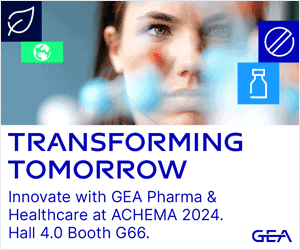The emergence and proliferation of bacteria resistant to existing antibiotics have caused real problems, so new drugs that work via novel mechanisms are very much needed. One such agent is NVC-422, being developed by US biotech company NovaBay Pharmaceuticals.
As part of the body’s mechanism for fighting infection, activated polymorphonuclear neutro-phils are involved in phagocytosis, during which they create reactive oxygen species, including hydrogen peroxide. The enzyme myelo-peroxidase catalyses the oxidation of chloride ions by hydrogen peroxide to give hypochlorous acid. This strongly oxidising chemical reacts with many different nitrogen-containing compounds, notably taurine, to give N–Cl derivatives.
The chlorotaurine derivative – and the dichloro derivative, which is also formed – has a broad spectrum antimicrobial action. NVC-422 is a more stable analogue, in which the elimination of HCl to give an imine is prevented.1 It can kill bacteria in minutes, and remains effective against multi-drug resistant bacteria, both Gram-positive and Gram-negative. In addition, it is active against many viruses, notably adenoviruses.2
Several clinical trials have been carried out, for example in the prevention of urinary catheter blockage and encrustation, which often leads to painful UTIs that can be difficult to treat. In an open label dose escalating pilot Phase IIa study, it was given to patients with long-term catheters, who had asymptomatic bacteriuria.3 They were given a 0.1% or 0.2% solution of the drug as an instillation of 25–100ml through the lumen of the catheter, and the contents of the bladder then drained. A second instillation was carried out immediately, and left in the bladder for an hour.
In the second part of the trial, they were given similar procedures every day for seven days, and of the 10 patients who completed the treatment schedule, at least one pathogen disappeared in two of the five on the lower dose, and four of the five in the higher dose group.
Trials have also been carried out using a topical gel formulation of the drug in 129 children with impetigo, mostly caused by Staphylococcus aureus infection.4 A response rate of 85% a day was seen with a 0.1% gel, 97% with a 0.5% gel, and 92% at 1.5%. There was no recurrence of infection two weeks later.
A randomised, double-blind, parallel group Phase II trial has also been carried out in adeno-viral conjunctivitis. A total of 81 patients were treated eight times a day for 10 days with an ophthalmic solution of the drug or vehicle alone. Both clinical and microbiological improvements were seen in those given the drug, and there was both less transmission to the other eye, and a statistically significant improvement in the clearance rate of blurred vision. Trials continue.
references
1. L. Wang et al. Tetrahedron Lett. 2008, 49, 2193
2. L. Wang et al. Antimicrob. Ag. Chemother. 2011, 55, 2688
3. S.A. Rani et al. 50th Intersci. Conf. Antimicrom. Agents Chemother. (Sep 12-15, Boston) 2010, Abst. K-2199
4. S.M. Iovino et al. Int. J. Clin. Exp. Pathol. 2011, 4, 587




